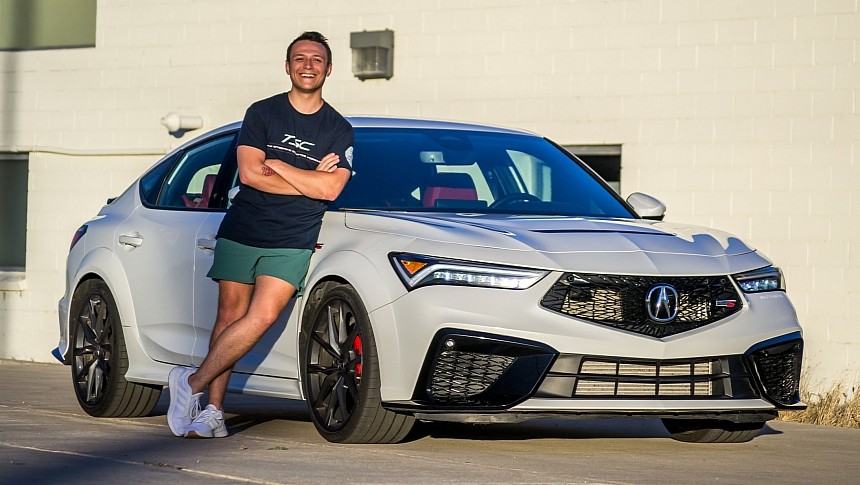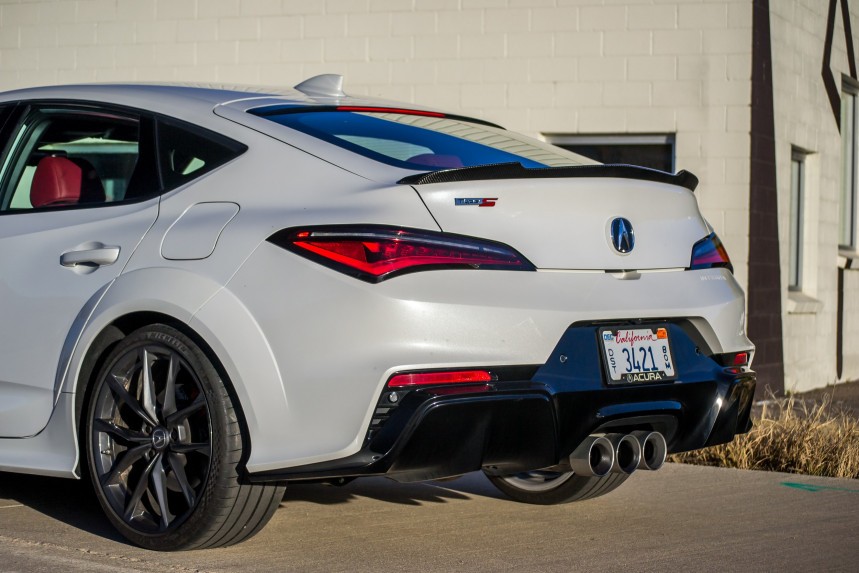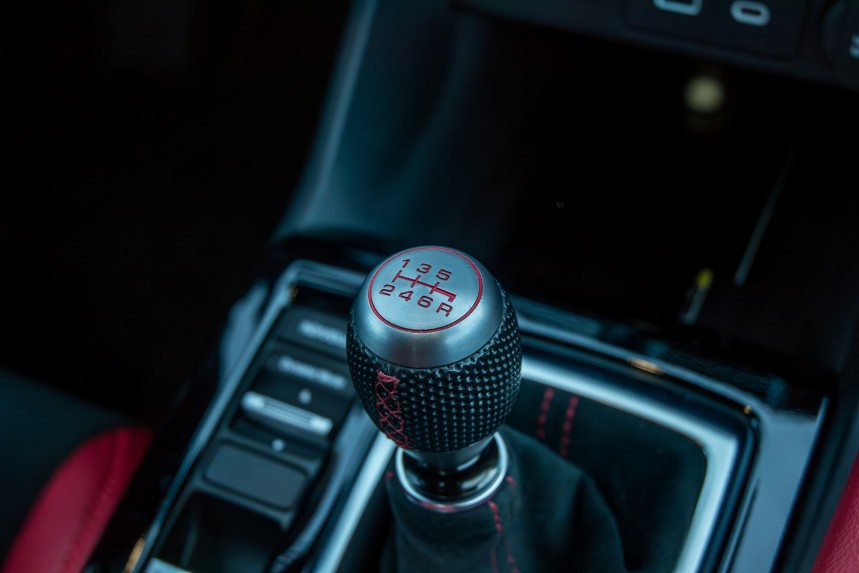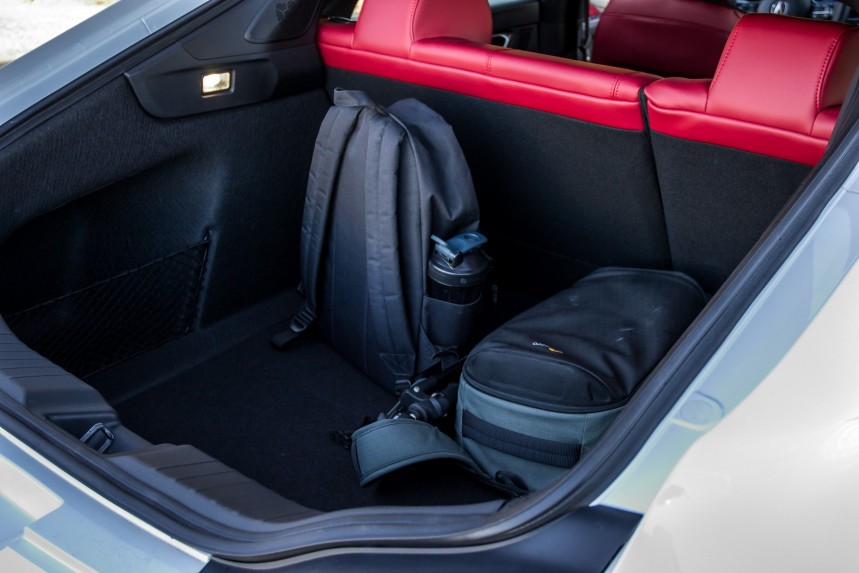Wanna know the secret to a great driver’s car? A few brands do. Mazda, for one. So does Porsche. Acura does, too, and the new Integra Type S proves it.
The single thing that unites cars from these great, if very different brands, is inputs. The way things feel when you interact with them. At Porsche, it might be the way the stitching on the dash feels, or the way the shifter slides into its gate. At Mazda, it might be the perfect pedal placement for heel-toe downshifting. The Acura Integra Type S takes the inputs you give it and outputs all sorts of great stuff: turbo noises, tire squeals, and most of all, speed.
The Type S is the new take on the Integra Type R of old- but with a twist. Rather than being an all-out focused weapon for outright lap time domination, Acura has told me that the “S” in Type S stands for Street. This Integra is about 20% softer than its Civic Type R twin, and the extra $7,105 premium over the R goes to a nicer interior, sound system, and other comforts you won’t find in anything with Type R badging. At $51,995 MSRP over the Honda's $44,890, the Acura finds itself with more powerful, 2-door, rear-driven competitors as well as out-pacing hatch-y competition like the Golf R. It’s in a weird spot. Yet somehow, Acura makes it make sense.
I love the huge fenders. They look stuck-on, and the wheels fill out the arches nicely, giving the car a great stance. The stamped Integra badging is a nice callback too, and this press car came in the spec- Championship White over red. I don’t care that that isn’t the real name of the white paint- Acura should call it that anyway. It’s got a cool pearlescent effect to it as well, which helps the car as a whole feel more premium. Acura also offers some cool blues and its golden Tiger Eye Pearl shade, which is arguably the color to get.
Both offer solid seats, nice leather, a manual transmission (last year for the Golf R), and practical storage options for the days you can’t have a sports car. What’s more, the Type S has a much nicer infotainment system than that of its competitors. It’s more simple. The resolution is lower, and yet, it’s better. That’s because Honda/Acura don’t bury tons of items in menus (save one, which I’ll eviscerate them for yet), and the contorls are logically laid out.
Unlike the Golf, interior quality doesn’t drop off in the rear, helping to make up for some of that extra money spent on an Integra. The seats, doors, and switches are all the same as the front passengers get. Most adults will fit, too, though taller ones will start to run into the sloping roof.
But that’s small potatoes compared to the inputs. Until Porsche convinces me otherwise, this is the best manual transmission in a car on sale today. My God. I want to live inside this transmission. I wanna eat my meals off the flywheel. I’d pay a mortgage just to run through the gates for a morning workout. It’s so good that the only way to properly articulate it is hyperbole. The weighting is perfect. The throw length is beautifully short, but not so short it's aggressive. It’s just… *chef’s kiss*
The wild part is that the rest of the car’s inputs match this quality (though none eclipse it). The pedal placement is probably the weakest of them, and even that is still good for heel-toe work. The steering is beautifully light and communicative even in its most aggressive settings. Thanks to the softer ride, I can feel the car work over bumps while I manage the steering angle mid-corner, and grip levels are communicated accurately through both. It’s as good as front-wheel drive cars get, and that’s without mentioning the differential, which is effectively just a cheat code that lets you brake on the apex instead of before it.
Oh, and the brakes. I hate to keep ranting but those are excellent too. In short, the Type S (and in most ways the Type R) blows its competition out of the water. I actually think that I’d take this over cars that are significantly more expensive. I loved the V8 fun of the IS 500, but it can’t match the driving experience a car multitudes cheaper provides. Seriously, I have almost no notes. Save one.
A Honda PR rep told me at one point this was for driver safety- so that people wouldn’t disable it while moving. Only, trying the above ten-step process at a traffic light is exactly what I think anyone who buys this car will do. It’s exactly what I tried every time I wanted it off. Inevitably, someone is honking at you while you’re sweating over the parking brake disengaging.
As for other aspects of daily livability, the Type S is perfect. It's comfy, gets respectable MPGs (22 of them), and fits all your stuff. But Christ On A Bike does the rev-matching really sour the whole thing.
Pros
The Type S is the new take on the Integra Type R of old- but with a twist. Rather than being an all-out focused weapon for outright lap time domination, Acura has told me that the “S” in Type S stands for Street. This Integra is about 20% softer than its Civic Type R twin, and the extra $7,105 premium over the R goes to a nicer interior, sound system, and other comforts you won’t find in anything with Type R badging. At $51,995 MSRP over the Honda's $44,890, the Acura finds itself with more powerful, 2-door, rear-driven competitors as well as out-pacing hatch-y competition like the Golf R. It’s in a weird spot. Yet somehow, Acura makes it make sense.
Design Evaluation
Looking at the Type S, it doesn’t look any less aggro than the Type R. There’s certainly no “street” in the design. Unless you count the lack of wing, which you can make up for with an optional carbon spoiler. With or without it, the Type S is so much fun to look at. Pretty? Not really, but a fun design always wins me over.I love the huge fenders. They look stuck-on, and the wheels fill out the arches nicely, giving the car a great stance. The stamped Integra badging is a nice callback too, and this press car came in the spec- Championship White over red. I don’t care that that isn’t the real name of the white paint- Acura should call it that anyway. It’s got a cool pearlescent effect to it as well, which helps the car as a whole feel more premium. Acura also offers some cool blues and its golden Tiger Eye Pearl shade, which is arguably the color to get.
Interior Assessment
As said above, part of the price premium is down to a nicer interior. The seats, touchpoints, and materials all feel worth the $50k-ish Acura wants for this thing. The quality is there. I’d even put it above the $58,000 Supra I was in a few weeks back. From this point of view, the Golf R is the Type S’ greatest competition.Both offer solid seats, nice leather, a manual transmission (last year for the Golf R), and practical storage options for the days you can’t have a sports car. What’s more, the Type S has a much nicer infotainment system than that of its competitors. It’s more simple. The resolution is lower, and yet, it’s better. That’s because Honda/Acura don’t bury tons of items in menus (save one, which I’ll eviscerate them for yet), and the contorls are logically laid out.
Unlike the Golf, interior quality doesn’t drop off in the rear, helping to make up for some of that extra money spent on an Integra. The seats, doors, and switches are all the same as the front passengers get. Most adults will fit, too, though taller ones will start to run into the sloping roof.
Driving Take
Let’s get this out of the way now- Acura will tell you the Type S has more power than the Type R. It’s about 5 horses. You won’t feel it. But that doesn’t make either of these cars slow. They’re downright fast. On twisty enough roads or circuits, you’re cutting it up with supercars, especially with the Type S’ Michelin rubber. 320 horsepower and 310 lb-ft is nothing to scoff at, and while the 2.0-liter turbo four is not as special as the GR Corolla’s three-cylinder, it makes up for it in potency.The wild part is that the rest of the car’s inputs match this quality (though none eclipse it). The pedal placement is probably the weakest of them, and even that is still good for heel-toe work. The steering is beautifully light and communicative even in its most aggressive settings. Thanks to the softer ride, I can feel the car work over bumps while I manage the steering angle mid-corner, and grip levels are communicated accurately through both. It’s as good as front-wheel drive cars get, and that’s without mentioning the differential, which is effectively just a cheat code that lets you brake on the apex instead of before it.
Oh, and the brakes. I hate to keep ranting but those are excellent too. In short, the Type S (and in most ways the Type R) blows its competition out of the water. I actually think that I’d take this over cars that are significantly more expensive. I loved the V8 fun of the IS 500, but it can’t match the driving experience a car multitudes cheaper provides. Seriously, I have almost no notes. Save one.
Everyday Driving
My complaint goes under this segment because a) my editor will tell me the sections look lopsided if I don’t spread this out, and b) because it affects everyday usability. Acura and Honda both offer rev-matching for this transmission (which can be had in the Civic Si, too). It works beautifully and saves you some mental energy in traffic. But let’s say traffic clears and the nice, twisty road you’ve been on is now free of obstacles. Here’s what you have to do to turn off the rev-matching: First, pull over. You’ve just let traffic by, ruining your clear run down your favorite backroad. Second, cry about this and put the parking brake on. It’s electronic, so it’ll take longer than a mechanical one. Now that trash truck you overtook a mile back has trundled by. Third, go into the settings menu. Fourth, scroll to the bottom of the list. Fifth, click “Driver Assistance.” Sixth, tap “Rev-Matching.” Seventh, select “Off.” Steps 8, 9, and 10: turn the parking brake off, select first, and set off again, fumbling to get Android Auto or Carplay back up so you have your directions back up.As for other aspects of daily livability, the Type S is perfect. It's comfy, gets respectable MPGs (22 of them), and fits all your stuff. But Christ On A Bike does the rev-matching really sour the whole thing.
Test Drive Roundup
Today is November 16th. I’m starting to think about all the great cars I’ve driven this year. The Acura looms large. It’s got that sauce. That blend of features and inputs that makes something special. Once a brand has it, they have the opportunity to capture a generation of car enthusiasts. Last time Acura had this, it was the original Integra and the NSX that did it. The NSX is no more, but it turns out you only need one car to carry a brand, and the Type S is one hell of a standard bearer.Pros
- The best manual transmission on sale today
- Cheat code differential
- Practical hatch layout
- Keep-it-simple-stupid infotainment
- Must we go over the rev-matching again?
- Someone’s gonna seriously say “no pop-up headlights” but it ain’t me










































